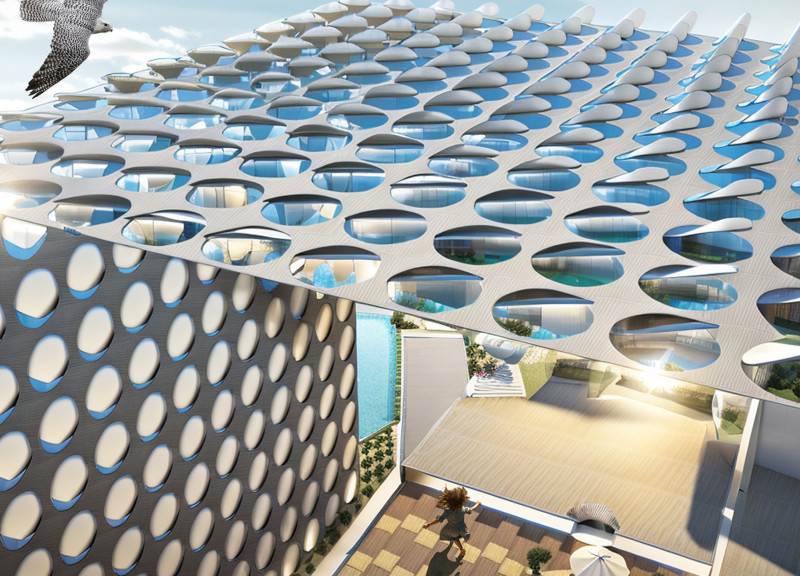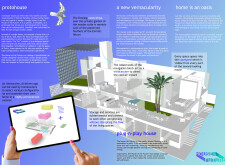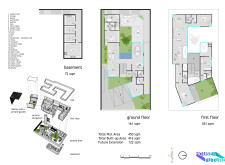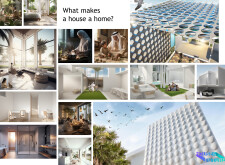5 key facts about this project
## Overview
The House of the Future is located in an arid region of the Emirati landscape, with a design that thoughtfully considers local environmental conditions and cultural customs alongside contemporary architectural practices. Its modular construction strategy caters to the personalization and sustainability requirements of modern Emirati families, aiming to create flexible living spaces that adapt to varying family sizes and future needs.
## Modularity and User-Centric Design
The dwelling is conceptualized as a kit-of-parts, allowing families to customize their residences based on individual preferences. The layout employs a modular, interlocking approach that facilitates the rearrangement of spatial configurations, promoting dynamic living environments. The integration of smart technology enhances user experience; an AI-driven application enables customization and configuration selection, fostering interactive and user-engaged housing solutions.
## Sustainable Practices and Materiality
Sustainability is a central theme, with design techniques that leverage passive cooling methods adapted to local climatic conditions. Features such as windcatchers facilitate natural ventilation, while the incorporation of solar energy underscores a commitment to energy self-sufficiency. The material selection further enhances the project’s environmental considerations: perforated metal panels are utilized for shading and privacy while allowing natural light penetration; concrete provides structural integrity and thermal massing; extensive glass use maximizes daylight and connects interior spaces to the exterior landscape. In addition, the design includes landscaping elements that promote biodiversity and outdoor socialization, strengthening the relationship between built and natural environments.






















































